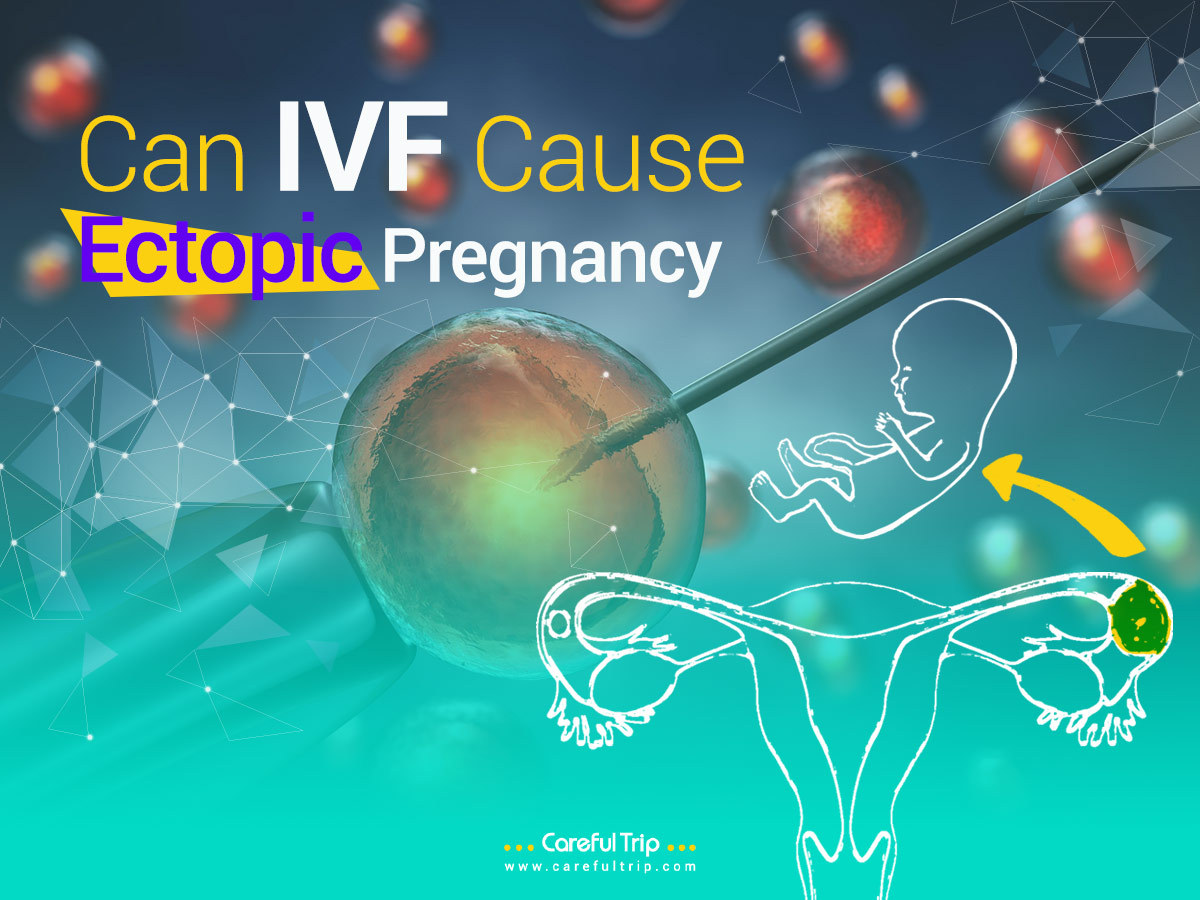
Introduction
Ectopic pregnancies, where the embryo implants outside the uterus, most commonly in the fallopian tubes, pose serious health risks including severe bleeding and loss of fertility. With the rise of In Vitro Fertilization (IVF), a technique that involves combining eggs and sperm outside the body to create embryos that are then implanted in the uterus, many couples experiencing infertility have found hope. However, this assisted reproductive technology also introduces concerns about increased risks of ectopic pregnancies. This article explores the relationship between IVF procedures and the likelihood of ectopic pregnancies, integrating the latest research findings and expert insights to provide a comprehensive view of the risks involved. At the end of it, you realize the reasons for ectopic pregnancy and how IVF in Iran works.
Understanding Ectopic Pregnancy
Definition and Background
Ectopic pregnancy occurs when a fertilized egg grows outside the main cavity of the uterus, threatening the mother’s health and future fertility prospects. While it accounts for only 1-2% of all pregnancies, the condition is a leading cause of pregnancy-related deaths during the first trimester. The biological mechanisms behind ectopic pregnancies involve factors such as inflammation of the fallopian tubes, hormonal imbalances, or abnormal egg development, which can misdirect the embryo’s implantation.
Ectopic Pregnancy in Natural Conception vs. IVF
The risk of ectopic pregnancy in natural conception is significantly influenced by factors such as the mother’s age, previous ectopic pregnancies, or surgeries in the pelvic area. In IVF, these risks are compounded by the procedures of ovarian stimulation and the physical manipulation of eggs and sperm. Recent studies indicate that ectopic rates in IVF pregnancies are slightly elevated compared to natural conceptions, emphasizing the need for meticulous monitoring during the IVF process.
For more information, read:
IVF and Ectopic Pregnancy Risks
How IVF Can Lead to Ectopic Pregnancies
IVF involves several steps that could potentially increase the risk of an ectopic pregnancy. For example, during the embryo transfer process, if the embryo is placed too high or too deep within the uterus, it could migrate toward a fallopian tube. Moreover, the use of multiple embryos might overcrowd the uterine environment, pushing some embryos into suboptimal locations for implantation.
Statistical Overview of IVF and Ectopic Pregnancy Rates
Statistics from various clinical studies demonstrate that the ectopic pregnancy rate in IVF cycles ranges between 2-5%, which is slightly higher than the 1.5-2% observed in natural pregnancies. These figures underline the importance of technique and technology in minimizing risks during embryo transfer.
Factors Contributing to Ectopic Pregnancy in IVF
Medical Factors Influencing Ectopic Risks
The predisposition to ectopic pregnancies in IVF patients is often linked to underlying reproductive conditions such as tubal disease, pelvic inflammatory disease, or previous ectopic pregnancies. These factors can inherently affect the embryo’s ability to implant correctly in the uterus.
Role of Embryo Transfer Techniques
The precision of the embryo transfer technique is crucial in reducing the risk of ectopic pregnancies. Advances such as the use of ultrasound guidance during embryo transfer have significantly improved the accuracy of implantation, reducing the likelihood of ectopic placements.
Prevention and Management of Ectopic Pregnancy in IVF
Advancements in Monitoring and Technique
Continuous improvements in IVF technology, including better imaging techniques and refined laboratory conditions, have helped in the early detection and prevention of ectopic pregnancies. Regular monitoring through ultrasound post-transfer is a critical step in ensuring the embryo’s correct implantation.
For more information, Read:
Influenza Effects on the IVF Process
Treatment Options for Ectopic Pregnancies Post-IVF
When detected early, ectopic pregnancies can be managed with medication that stops the growth of the embryo. In more severe cases, surgical intervention may be required to remove the ectopic tissue. These treatments are crucial to prevent complications and preserve fertility as much as possible.
Economic Impact of Ectopic Pregnancies in IVF
Costs Associated with Ectopic Pregnancy Treatment
The management of ectopic pregnancies involves significant costs related to diagnostic tests, treatment procedures, and follow-up care. These costs add to the overall financial burden of IVF, which already includes the expenses of multiple cycles and associated medical treatments.
Cost-Benefit Analysis of Preventive Measures in IVF
Investing in preventive measures such as improved screening techniques, single embryo transfers, and enhanced transfer protocols can be economically beneficial. These practices not only reduce the risk of ectopic pregnancies but also decrease the potential for subsequent treatment costs, making IVF safer and more cost-effective in the long run.
IVF in Iran: Pioneering Advances in Reproductive Technologies
Introduction to IVF Innovations in Iran
Iran has established itself as a hub for advanced reproductive technologies, with substantial investment in research and clinical expertise. Iranian clinics, known for their high standards and innovative techniques in IVF, offer new hope to couples from around the world.
For more information, read:
Role of CarefulTrip and MOM Infertility Treatment Center
The partnership between CarefulTrip and MOM Infertility Treatment Center in Tehran exemplifies the fusion of medical expertise and patient-centered care in Iran. These institutions are renowned for their pioneering work in IVF, providing patients with the latest and most effective treatments to tackle infertility issues, including the risk of ectopic pregnancies.
Summary
This article has delved into the complex relationship between IVF and ectopic pregnancies, highlighting the increased risks associated with assisted reproductive technologies. Through a detailed examination of the causes, statistics, and prevention strategies, it provides valuable insights for those considering IVF. The advancements in medical techniques, particularly in Iranian medical centers like the MOM Infertility Treatment Center, supported by CarefulTrip, illustrate significant progress in reducing these risks and enhancing patient outcomes.
Conclusion
While IVF offers invaluable opportunities for parenthood, it also necessitates careful consideration of associated risks like ectopic pregnancies. The expertise available at MOM Infertility Treatment Center, combined with CarefulTrip’s support, ensures that patients undergoing IVF in Tehran receive the highest standard of care, optimizing their chances for a successful and healthy pregnancy.
For more information, read:
